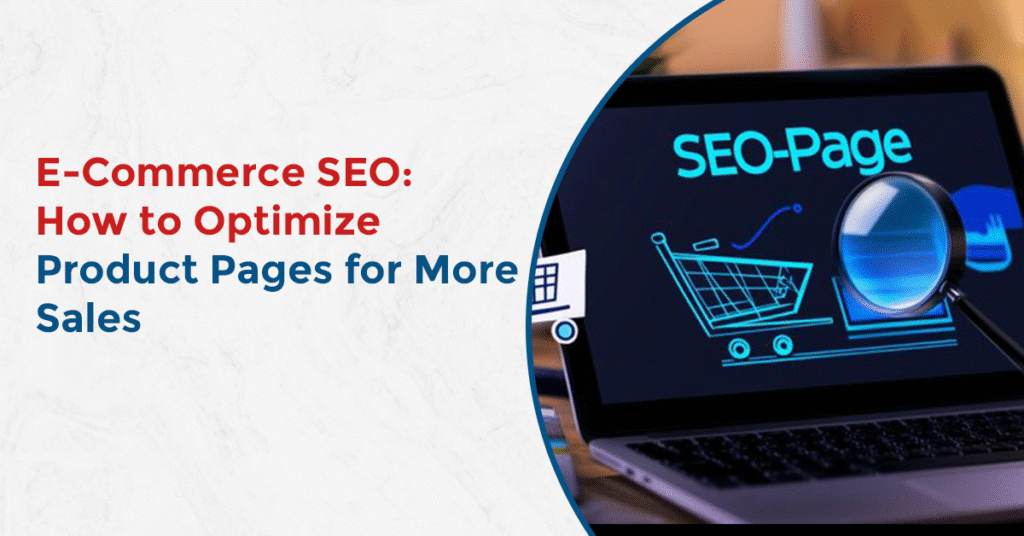
How To Actually Make Product Pages That Sell
product pages are chilling on page seven of Google while your competitors are busy cashing in? Yeah, been there. E-commerce SEO is kinda your secret weapon. Seriously, if you want to stop wasting traffic and actually get people buying, you gotta level up how your product pages show up and stand out. Here’s how you do it—no fluff, just real talk.
1. Ditch Basic Titles—Get Specific With Keywords
Look, “Running Shoes” isn’t cutting it. Nobody’s searching for just that. Go for titles like “Men’s Lightweight Running Shoes for Road Training.” Toss in those long-tail keywords (stuff like “lightweight,” “road training,” whatever makes sense). It’s not about stuffing keywords, it’s about matching what *real* people type into Google at 2 a.m. while impulse shopping.
2. Write Your Own Damn Product Descriptions
Copy-pasting whatever the manufacturer says? Yawn. Write something that actually sounds human and solves your customer’s problems. Like: “Our eco-friendly yoga mat for beginners won’t slip around, even if you’re sweating buckets during hot yoga. Super light, made from 100% recycled stuff, and tough as nails.” See? Way better than the generic nonsense.
3. Meta Titles & Descriptions: Your 5-Second Pitch
You’ve got, what, a split second to catch someone’s attention in search results? Use it. Stick a keyword in there, but also a call to action. Like:
Meta Title: Buy Lightweight Running Shoes – Free Shipping | YourBrand
Meta Description: Shop our best-selling men’s lightweight running shoes. Perfect for road training. Free shipping and easy returns. Order now!
4. Use Killer Images (And Smart Alt Text)
Shopping online = staring at pics. Upload crisp, high-res shots from all angles. Zoom in on the good stuff—textures, features, whatever. Oh, and alt text isn’t just for accessibility (which you should care about)—it’s an SEO goldmine. “Side view of black men’s running shoes with mesh upper.” Easy.
5. URLs That Don’t Suck
Nobody trusts www.store.com/product1234, not even your mom. Go with something clean like www.store.com/mens-lightweight-running-shoes. Short, sweet, and makes sense at a glance.
6. Schema Markup = Fancy Google Listings
You want those star ratings, price, and “in stock” to show up? Add Product schema markup. Suddenly your results look ten times more legit and get way more clicks.
7. Get Real Reviews (Not The Fake Kind)
People trust people. Reviews = instant credibility, and bonus, they add fresh keywords to your page. Nudge folks after they buy with a quick email, or bribe them with a discount. Whatever works.
8. Your Page Needs To Be Fast (Especially On Phones)
Most folks shop on their phones now. If your page loads slower than a dial-up connection, they’re gone. Compress your images, use lazy loading, make sure your buttons are big enough for clumsy thumbs, and test with Google PageSpeed. Under three seconds, or bust.
9. Internal Links = People Sticking Around
Link to related stuff—guides, blog posts, other products. “Can’t decide? Check out our Beginner’s Guide to Running Shoes or browse Top Fitness Accessories.” Keeps people surfing your site, which Google likes, and helps them find more to buy.
10. Trust Signals & Obvious CTAs
No one wants to gamble with their money. Slap on those “Buy Now” or “Add to Cart” buttons, security badges, easy return info, “Only 3 left!” alerts, and those cheeky “20 people are viewing this” pop-ups. It’s all about making people feel safe—and a little FOMO never hurt either.
Stick a little FAQ at the bottom. Use structured data so Google might show it off in search results.
What is e-commerce SEO?
Making your store and products show up higher in search—so you sell more
How long until I see results?
Usually 2–3 months. Could be faster, could be slower. Sorry, no magic wand.
Should I optimize every single product?
Start with your best sellers. Don’t try to boil the ocean, okay?
Conclusion : Stop Wasting Traffic, Start Making Sales
SEO for e-commerce isn’t just about higher rankings—it’s about building trust and actually selling stuff. Nail your product pages, start with your heavy hitters, keep tweaking, and keep an eye on your numbers in Search Console and Google Analytics. Go on, give your products a fighting chance.

